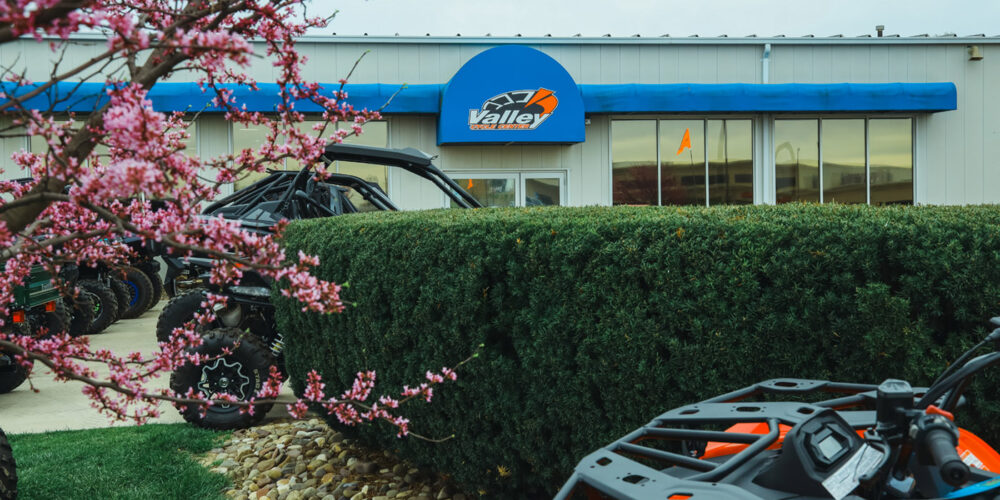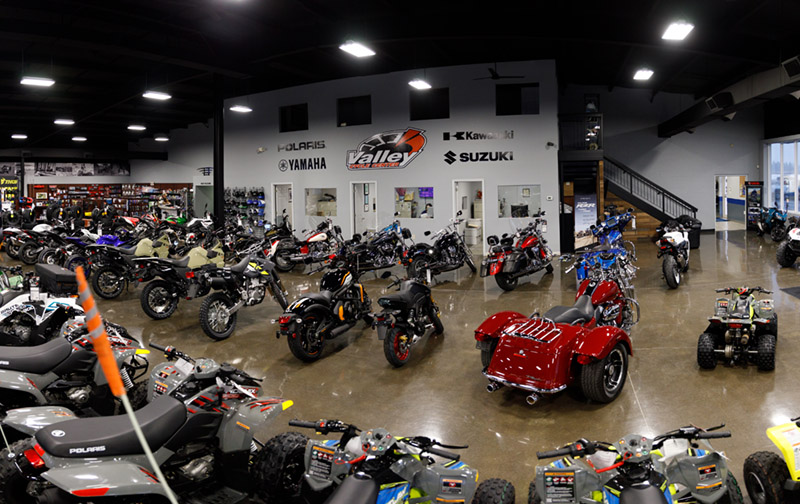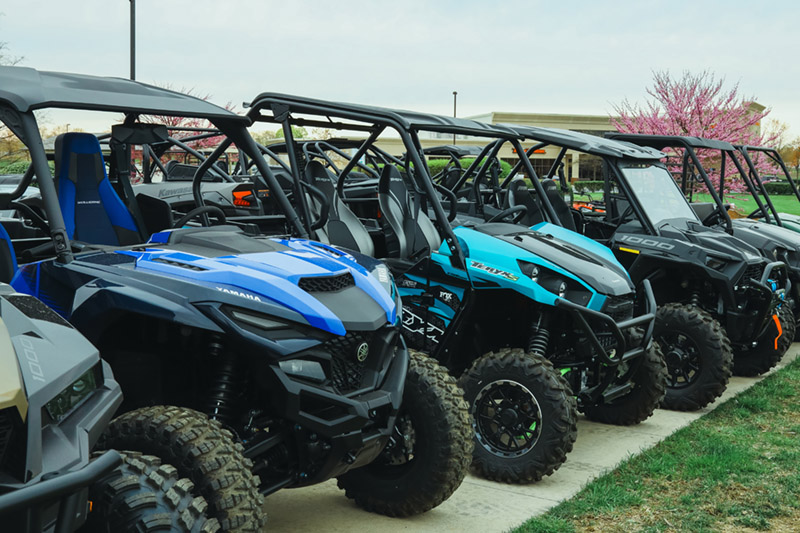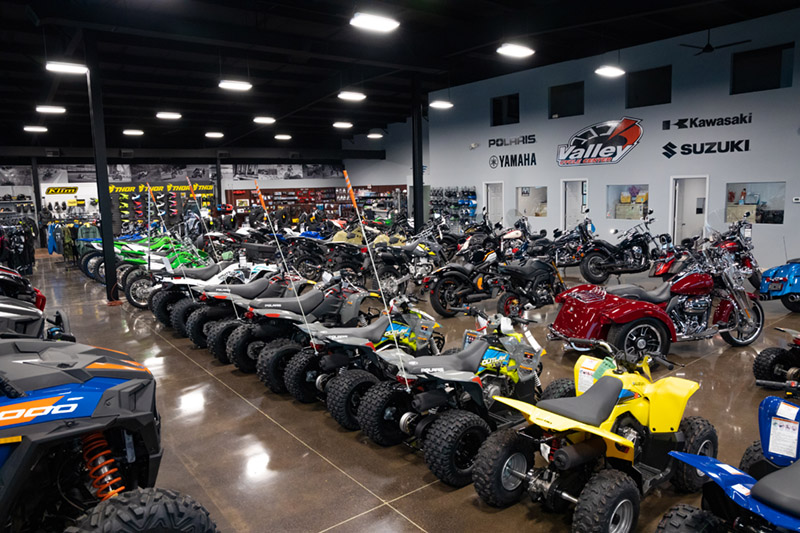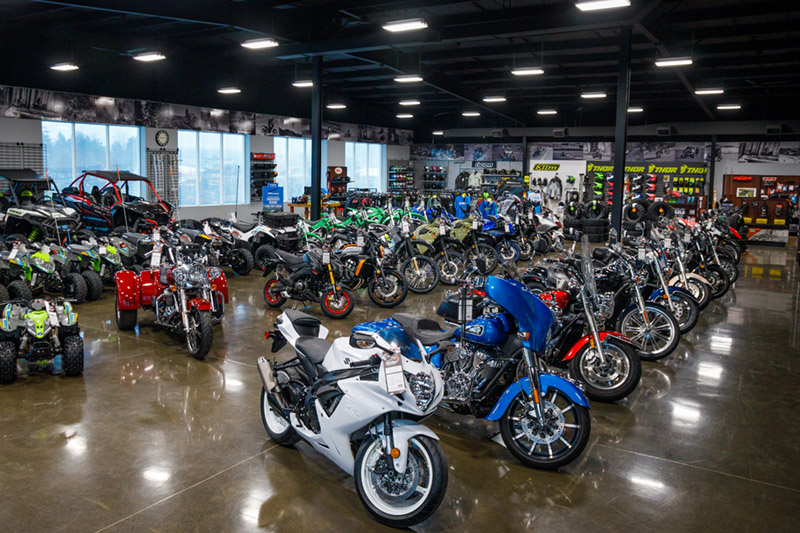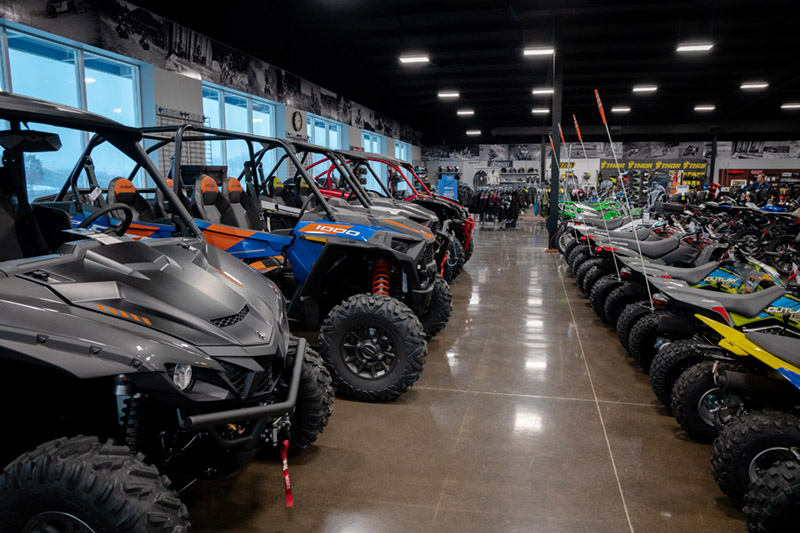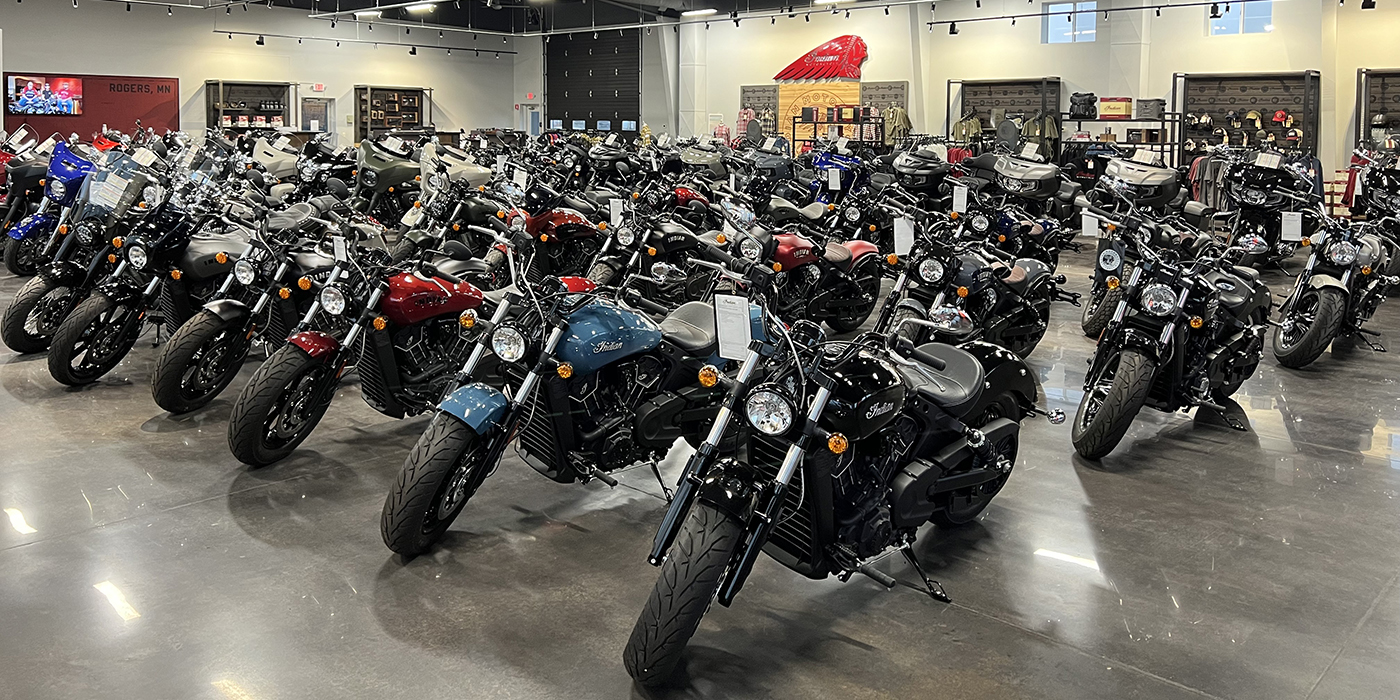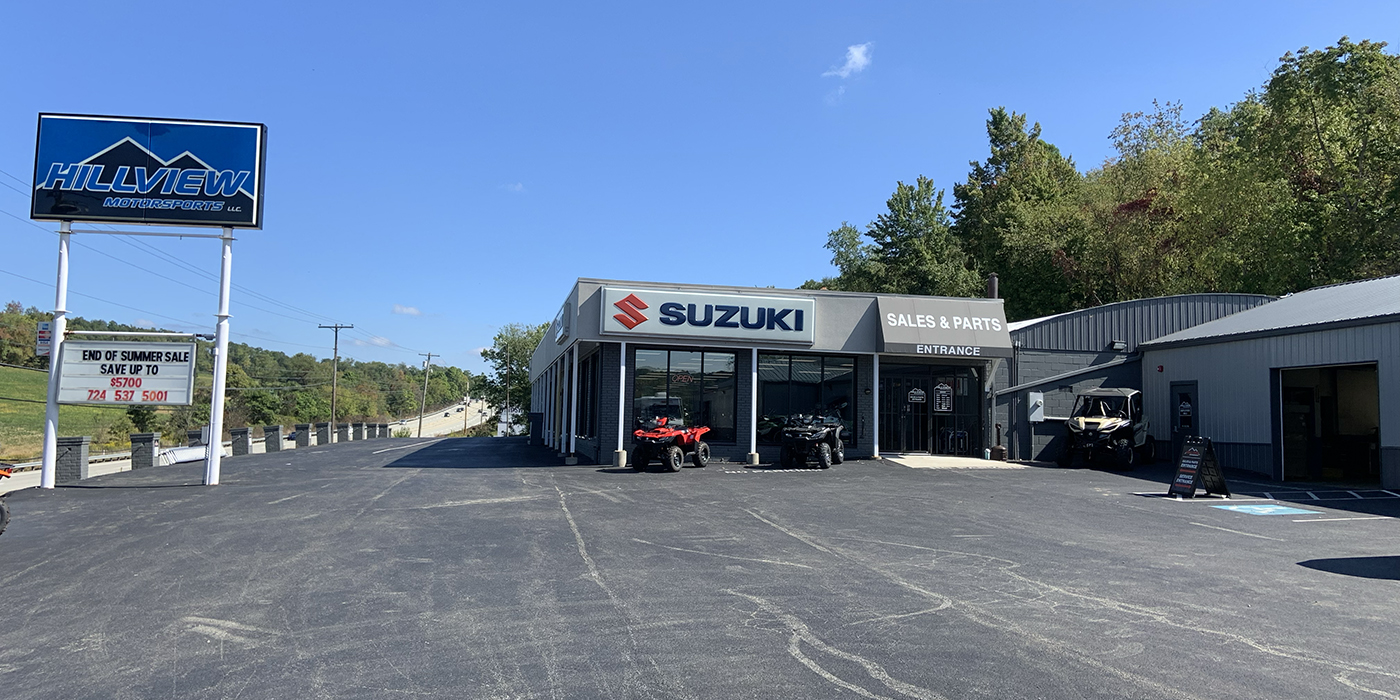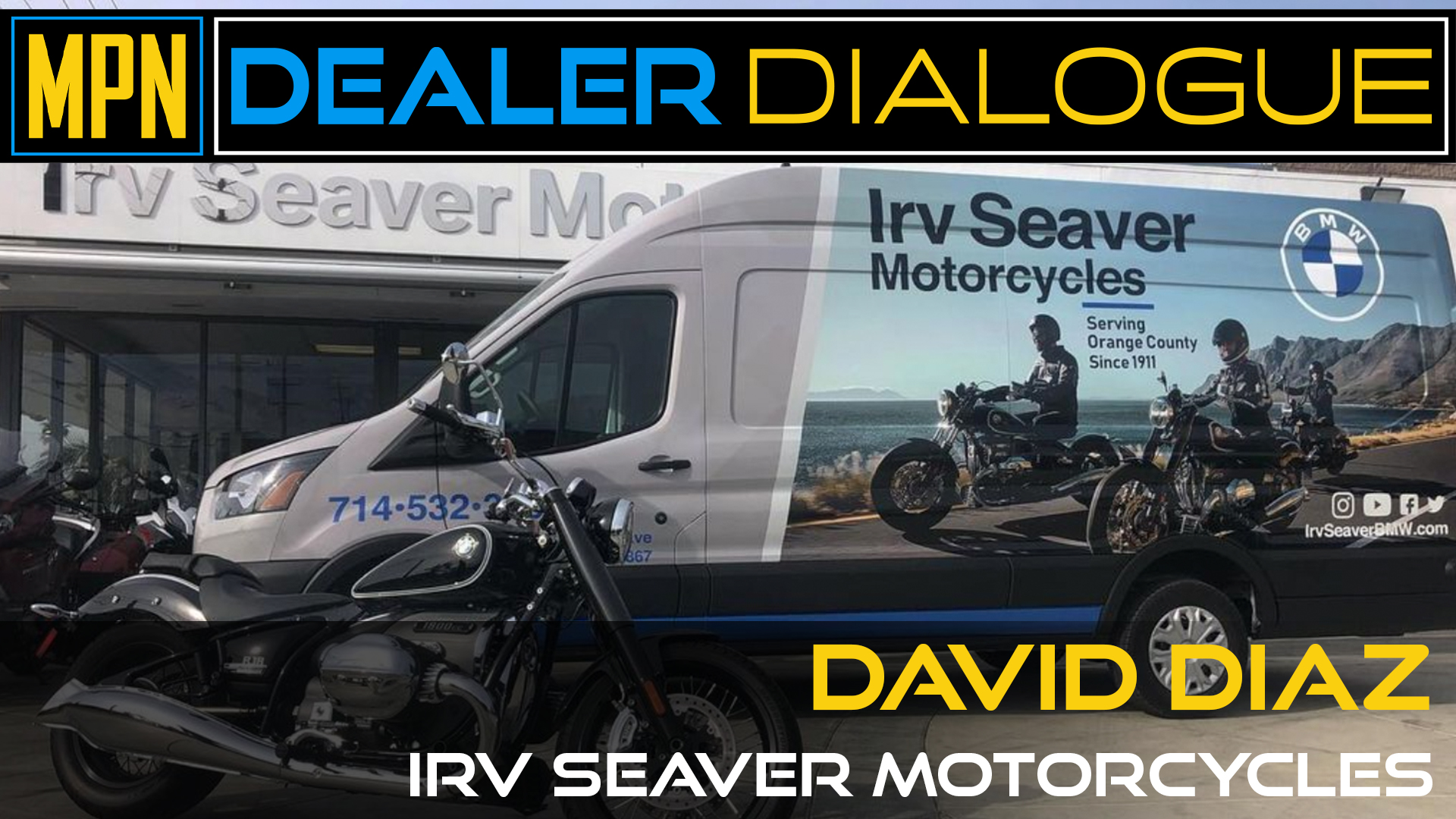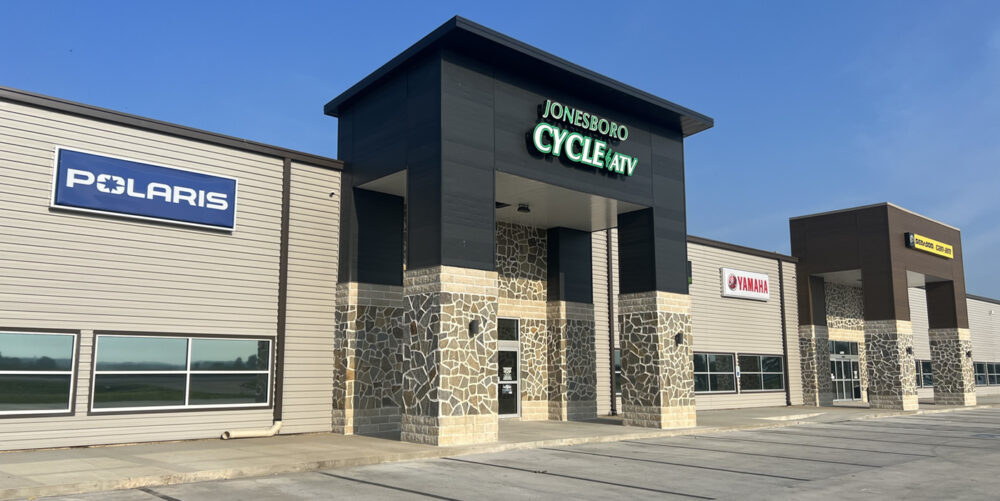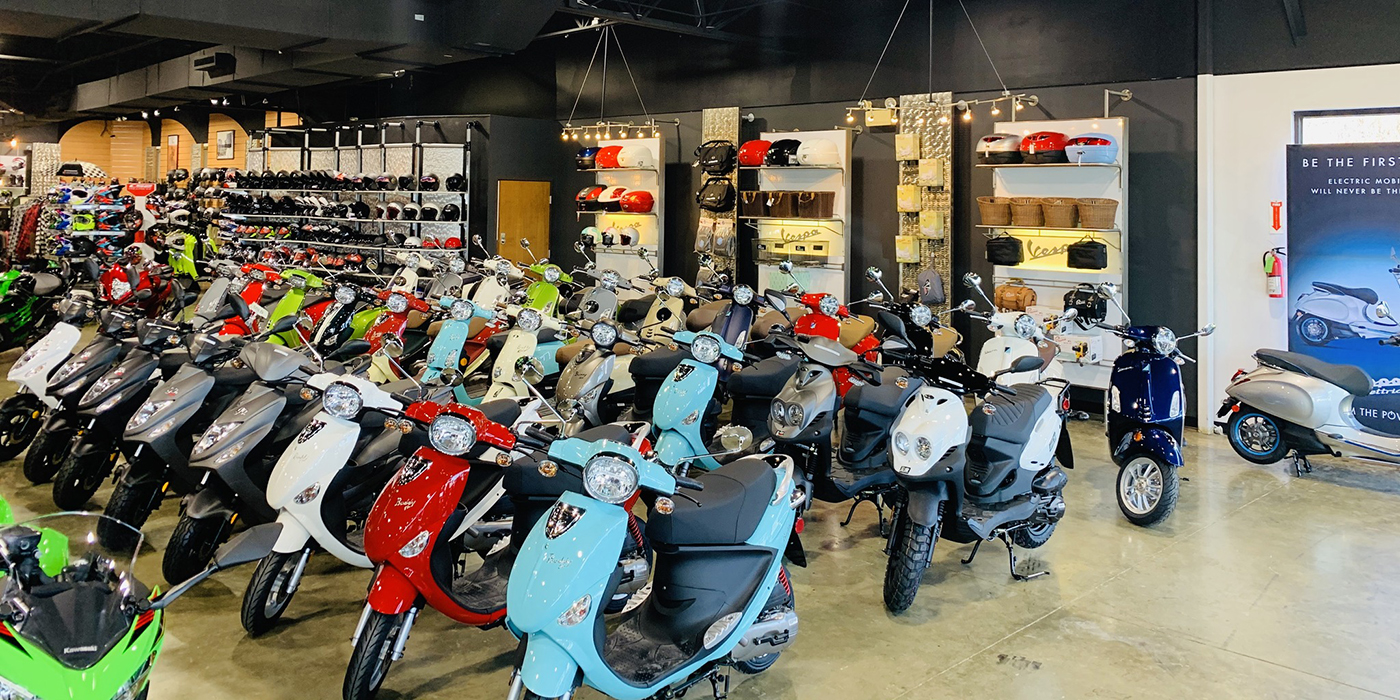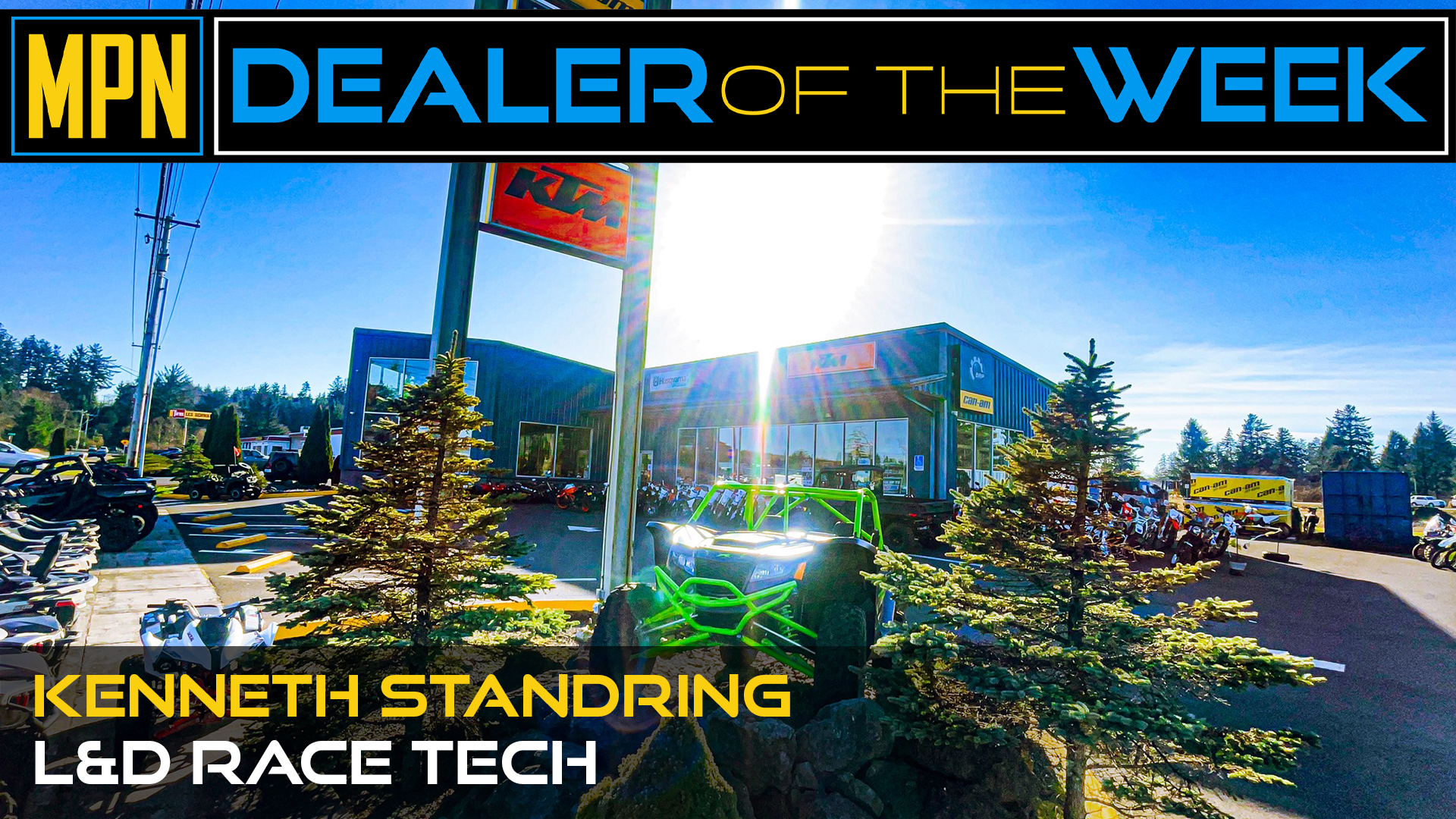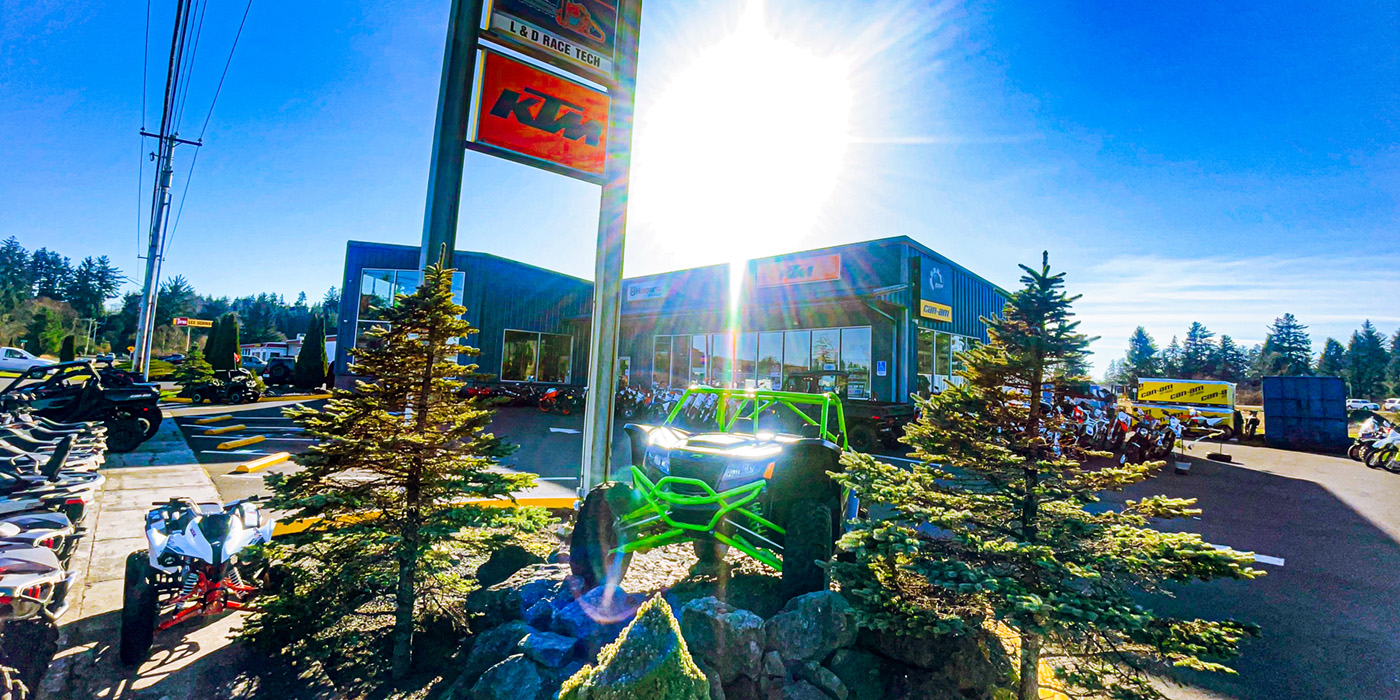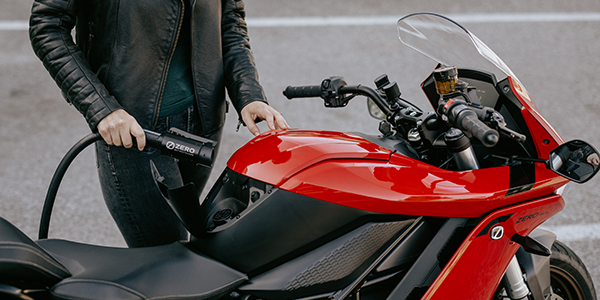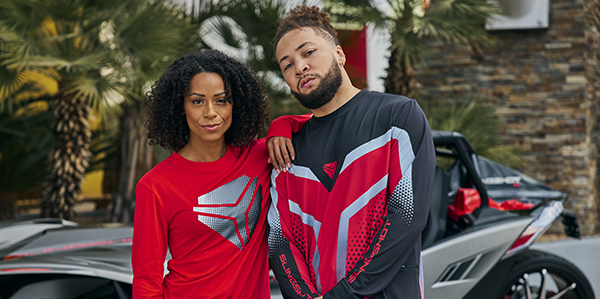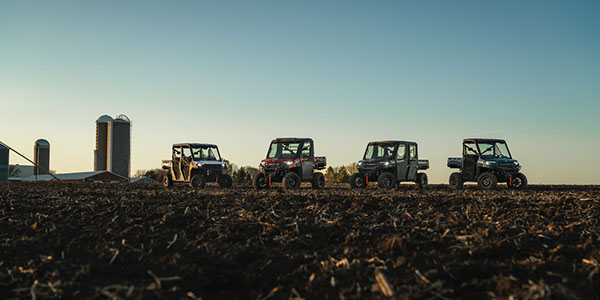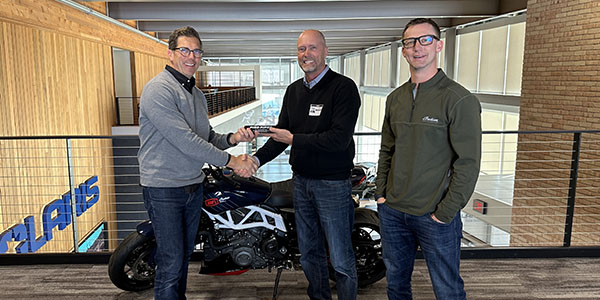The longer you’ve been in the motorcycle and powersports industry, the more you’ve seen it change — and likely, the more your dealership has changed as well. Take Valley Cycle Center in Winchester, Virginia, for instance. According to James Myers, the dealership’s president, his father was an enthusiast who liked riding, so he turned that passion into a business back in 1968 with a couple British franchises — Triumph and BSA.
Of course, in 1973, BSA stopped producing motorcycles (though it was resurrected in 2021), and today, the dealership doesn’t even carry Triumph anymore — or any European brand, for that matter. In addition, the store used to sell predominantly motorcycles; today, four-wheeled off-road sales compete neck-in-neck with two-wheeled ones.
While many of us are naturally resistant to change, businesses have to be able to adapt, and Valley Cycle Center stands out as an example of how pivoting during change can keep a company going strong for 55 years and beyond.
Earning Their Way
Myers’ father made it clear that passing the torch at the dealership would not be like a monarchy — no simple handing over of the scepter and crown when the time came. James and his brother were going to have to earn it.
And so, James’ brother started working as a child at Valley Cycle Center in 1998, and James himself came on a year later. But, it wasn’t until a few years ago that they eventually collected enough capital and courage to buy out their father and officially take over the business. Finally, they signed the papers in April 2020.
The transition of leadership is jarring enough to begin with, but doing so in the midst of a global pandemic proved an even rockier start. Myers acknowledges, “We’re just trying to do as well as he did and keep the ship off the icebergs.”
In hindsight, Myers admits, his first decision as the new president turned out to be a mistake. Figuring that no one was going to buy four-wheelers or motorcycles during a pandemic and not wanting inventory to sit on the show floor for who knew how long, Myers immediately canceled a bunch of orders. This proved expensive upfront in terms of lost sales as demand for vehicles skyrocketed. Even so, the wild experiences of the past few years have taught Myers something about his entrepreneurial style.
“I think I would much rather make an error on the side of conservatism more so than stocking my showroom full,” he admits. “Even now, we’ve got interest payments that I don’t like. We’ve got more stuff than we should, but dealers now — more than ever — need to become the best inventory managers they can be. Interest rates are just too expensive. Being a good inventory manager is essential above being good at marketing, good at anything else.”
What to Sell?
While the dealership’s roots lay in Triumph and BSA motorcycles, today it carries two- and four-wheeled vehicles from Kawasaki, Polaris, CFMoto, Suzuki, Yamaha, and Volcon.
“Out of [motorcycles, ATVs and UTVs], we still sell more motorcycles than we do anything else,” Myers states. “But, if you were to lump four-wheel together, it’s not even close. UTV is … nipping right on the heels of … motorcycling.”
In addition, Valley Cycle Center has embraced the electric vehicle (EV) trend. Volcon is the newest brand the dealership has brought on, but it started selling EVs years ago when Polaris first offered an electric Ranger and then discontinued it in favor of the Kinetic. Those models have always sold well, Myers notes. Being in “horse country,” EVs appeal to farmers and equestrian events alike, since they don’t disrupt much or spook the horses.
“It was just logical that we would pay attention to Volcon, and they seemed to be kind of the front-runners in pioneering this EV technology. It’s the way things are going,” Myers adds.
As far as parts, gear and accessories (PG&A) go, Valley Cycle Center sells primarily OEM-specific merchandise. While it does use the main aftermarket distributors — Western Power Sports (WPS), Tucker and Parts Unlimited — Myers notes that there are more benefits in staying with OEM products, simply because the number of dealerships that are part of the aftermarket distributor networks far outnumber OEM-specific dealers. In this way, Valley Cycle Center has less competition. Furthermore, the dealership does a fair amount of PG&A sales online through third-party sites, such as eBay and Amazon.
“Unfortunately, most of the [OEM] brands have eliminated what used to be Shopatron or Kibo now, which was a fulfillment site,” he says. “Customers went to kawasaki.com and they bought a T-shirt. Well, somebody had to fill that order, and dealers got to bid on those.”
He recalls that his employees excelled in fulfilling those orders back in the day. “It’s funny — this sweater might sit on a hanger in our dealership for six months, but … in that six-month time period, we sell 65-70 of them across the country online,” he adds.
While Valley Cycle Center predominantly sells gear online, most shoppers come in the store for parts and accessories — whatever they can bolt onto a vehicle. According to Myers, winches, roofs, windshields and back panels are top sellers. Yet, when customers come in to purchase motorcycles, the staff still tries to set up most everybody with the essential riding gear — a helmet, jacket, gloves and anything else needed to enjoy riding.
Team Commitment and Commitment to the Team
Valley Cycle Center’s success comes not just from the products it sells but also the people who make it all happen. Myers is proud of the company’s 19 dedicated employees, many of whom have been with the dealership for 20, 30 or more years. Naturally, not everyone who joins the team is a fit, but Myers believes that the company culture is a main reason why many employees stay so long.
“We have had some changeovers and turnover, but for the most part, our staff has been intact for a long time and [it’s] just such a benefit to have that,” he says. “We’re all familiar, we’re all family, we all get along well.”
This sort of retention only comes when the relationship between employer and employee is a two-way street, according to Myers. “Not only do you work for Valley Cycle Center, but Valley Cycle Center has to work for you,” he affirms. “We can’t do this thing as a dictatorship all one-sided and the benefit is a paycheck at the end of the week or the end of the month or whatever. The benefit has to be a daily benefit. It has to be something that for every sale that a salesman makes us has to be fulfilling in its own right and fill multiple cups, not just a financial cup or anything else. We try really hard to create an environment that is enjoyable and fun.”
Any dealer will tell you that finding and retaining technicians is tough nowadays, and Valley Cycle Center is no exception. However, Myers believes that the key to retaining techs lies in giving them a proper service department — a clean, comfortable, well-lit, well-equipped area with all the support techs need. Not only can doing so improve their working conditions but also the overall customer experience.
“We want to reinvest back in the dealership to make this a nice place to work,” Myers says. “Consequently, it bleeds over to our retail.”
Segmentation
Some days, Myers wonders whether Valley Cycle Center is a motorcycle shop or a four-wheeler dealer. Should he be stocking street helmets or snowplows? One day, he wants to get rid of all brands except one, but then the next, he believes diversification is for the better.
This sort of segmentation is what he sees as the greatest challenge in the powersports industry nowadays. Of course, he understands that other parts of the country require such segmentation to keep sales up year-round. In fact, it’s become a natural part of the industry, but sometimes, juggling so many brands with so many different types of vehicles can be a bit much, Myers states.
“I think that’s the biggest challenge for powersports dealers right now is figuring all that stuff out and trying to maximize the most of it,” Myers admits.
Overall, he believes, with Harley-Davidson dealers being the exception, selling only a single line isn’t enough to cut it in the powersports world, precisely because of the ebbs and flows of seasons. However, the difficulty comes in how to reach enough potential buyers of a certain segment.
“Powersports in general has become such a segmented industry,” he says. “With that segmentation has come different buyers or different types of buyers across the line. We used to be a motorcycle shop. When I came to work here, I think 84% of what we sold was two wheel, and we sold some four wheelers in the winter. It was … almost a side hustle, so to speak. Now, we’re dealing with, like I said, horse farmers. We’ve got dairy farmers. We’ve got hunters. We’ve got recreational off-road riders. We’ve got motocross riders. We’ve got street riders. Guys who are commuting from point A to point B. Every single one of those guys are different. It’s not the same buyer. You have to market differently to each one of them, and it’s become hard in our parts.”
To that end, Valley Cycle Center utilizes Beyond Creative for its marketing services and focuses on targeting those within a 25-mile radius of its store in an effort to capture the majority of its sales in its backyard. The dealership does so through social media advertising (paid and organic), direct mailing and utilizing audience data from people who visit the website. Those visitors, if from a residential address, then get a direct mailer.
“We also use that data to determine our cost per lead, per sale, etc. Essentially to determine if we’re hitting our target or need to modify it to best suit our overall objectives,” Myers explains.
Once people are in the door, Myers’ team relies on building relationships with customers to make sales happen. Although a product will sometimes speak for itself, most other times, you have to sell yourself first before the product, Myers notes.
“Build the relationship first. Identify with that person, build the relationship first, and everything else will fall in second,” Myers says.
Preparing for the Future
Running a business means adapting to the times, and Myers gets many of his ideas for improvement from his 20 Group, finding it extremely beneficial. “I’d like to see all dealers in them, so long as they’re willing to adopt what they learn,” he says. “That’s the tough part — realizing your ideas aren’t the best and ‘this guy over here’ is doing it better. Pride can be an obstruction, but those willing to set that aside usually make for the best operators in the long run.”
Valley Cycle Center uses Spader (www.spader.com) for access to its 20 Group. There are direct and ancillary benefits, such as networking with non-competing dealers and finding out how they operate. “It’s like a board of directors for your business, if you allow it to be,” Myers adds.
In today’s fast-paced world, making a five-year plan is rather obsolete. Now, business owners are better served looking at the next 12 to 24 months. As far as any immediate changes to the dealership go, Valley Cycle Center plans to expand its retail space to accommodate growing inventory — not just in terms of numbers, but also size.
Myers wants to sell the brand-new Polaris Xpedition adventure side-by-side, because he finds it a really cool machine. However, it’s too big to fit on the current show floor. After that — who knows? Myers realizes the industry is constantly evolving and says they will face any hurdles as they come.
“It’s hard to say where we’re going and what’s coming next … but we are hoping to be prepared and be ready for it and be on the front side of things,” Myers concludes.

